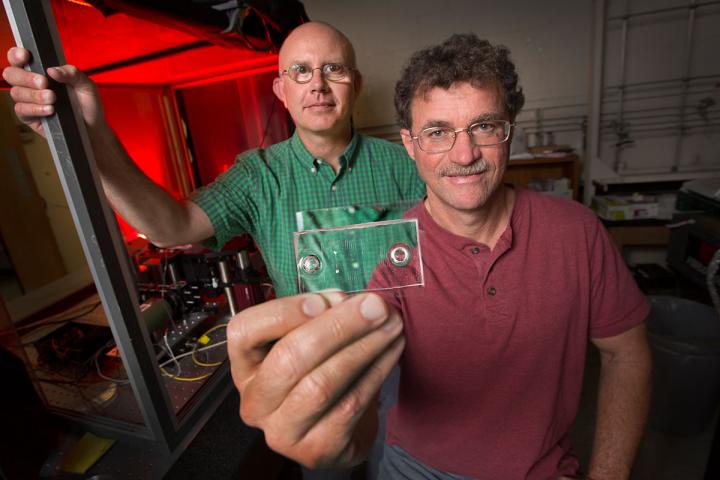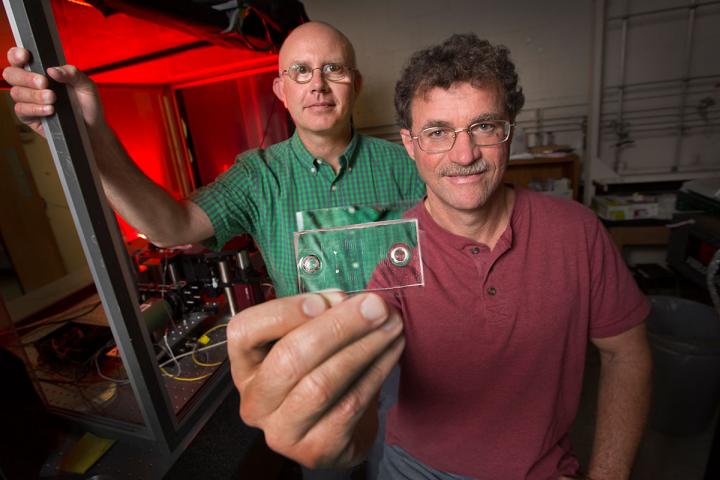
Credit: (FSU Photography)
TALLAHASSEE, Fla. — Researchers at Florida State University's nationally renowned biomathematics program are using a mix of math and technology in an ambitious search for a cure to Type 2 diabetes.
New research by mathematics Professor Richard Bertram has successfully reactivated oscillations in insulin-producing pancreatic beta cells — one of the first necessary steps to resurrecting the dormant cells and restoring the production of insulin.
That's the problem for people living with diabetes: Their pancreatic cells either don't make any insulin, or they don't make enough to control blood sugar, causing dangerous hyperglycemia – high blood glucose. About 30 million Americans live with diabetes; 95 percent have Type 2 diabetes.
Bertram's trendsetting research — published in the journal PLOS Computational Biology with graduate student and lead author Joseph McKenna — is a breakthrough that takes another step toward the goal of finding a cure for Type 2 diabetes.
"There's no one else using this combination of tools," Bertram said. "It's nice to be doing scientific work gaining insights that no one else is gaining because we have the right collaboration with the right tools."
The right tools include Bertram's own mathematical models along with unique "microfluidic devices."
The right collaboration includes Michael Roper, an associate professor in the Department of Chemistry and Biochemistry, who dreams up — and then builds — the precision devices that bring Bertram's math models to life.
Bertram's equations can simulate many potential biological responses. Researchers test those predictions in an experimental lab with a glass microfluidic device — beautiful in the simplicity of its outer appearance but also daunting in the complexity of its inner design.
The device, about the size of a credit card, is etched with microscopic channels that can deliver perfectly measured and controlled amounts of a glucose liquid solution to dormant pancreatic beta cells, which form clusters called islets. Researchers perform varying experiments on mouse islets using microfluidic devices.
"They're made a lot like computer chips are made," Roper said. "(The device) allows either one or several islets to be placed within it. Then we can deliver very accurate glucose levels to these cells in a very controlled manner."
By delivering accurate glucose levels to pancreatic islets in the lab, researchers can test how insulin-producing beta cells get turned off and whether they can be reactivated.
With Roper's microfluidic device, researchers delivered tiny doses of glucose — about one microliter or 1/1000th of a raindrop — to the dormant pancreatic beta cells of mice. When those controlled doses were administered in rhythmic pulses of exactly the right size and frequency, mimicking a healthy body, they triggered inherent oscillators in the islet cells. That caused the cells to vibrate and secrete insulin in a "healthy" fashion.
The experiment is a valuable milestone in Bertram's long quest to better understand the disease. And, it's a good example of how the intersection of math and biology can advance that goal.
He's also focused on why tissues throughout the body become insulin resistant, causing pancreatic islets to wear out and eventually shut down. When that happens, a person has the disease.
Now, Bertram and Roper — and their team of FSU researchers — look to the future using a fascinating mix of math and new technology to help lead the search for a cure.
"We can think of this as making progress toward that goal," Bertram said. "Type 2 diabetes is a very complicated disease. The way that we can beat it is by understanding how all these components work and that's what we're contributing to. Scientific breakthroughs are often facilitated by mathematics."
###
Media Contact
Dave Heller
[email protected]
850-644-2065
@floridastate
http://www.fsu.edu
############
Story Source: Materials provided by Scienmag




